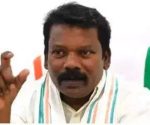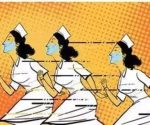The rising cost of youth sports champions: Balancing dreams & financial realities | Chennai News – The Times of India

For most young sports aspirants, the journey to the podium is paved with expensive private coaching, financial risks, and no fallback plans, leaving many stranded by their 20s
Every day, 13-year-old Karan wakes at 5 am, makes himself a healthy breakfast, and heads to cricket coaching. Karan’s family moved across the city for him and put him in open schooling, as most of his day, week, and year is spent on practice, matches, travel, and taking care of his health and fitness. Karan’s cricket dreams cost Rs 3 lakh a year for coaching and gear, besides travel expenses.
“It’s not like the earlier days where full-time sports was a niche activity. There are hundreds of children like Karan, who start practice early in the morning, with the full gear,” says Karan’s mother.
Coaches say most kids in full-time coaching for expensive sports such as cricket or tennis come from wealthy families or switch specialities based on affordability. “If you can’t afford batting gear, you settle for bowling; it’s cheaper,” says Syed Z, a Bengaluru-based coach. “In cricket, risks are high but so are the rewards, you earn a lot if you make it.”
The more popular the sport, the tougher the competition, and the costlier the coaches and gear. And it’s not just about outdoor games.
In chess, international travel becomes essential after a point. Grandmasters Vaishali and Praggnanandhaa’s parents borrowed money to fund their travels initially. In a recent interview, former badminton champ turned coach, Pullela Gopichand, said middle-class parents should think twice before pushing their children into sports, not because of the cost alone, but the lack of job options later. His remarks drew mixed reactions, but his point was that for every winner, there are a thousand left floundering without a degree or a job after 30, having given their all to training.
Paradoxically, coaches say children from lower-income families often show more promise. “They give it their all, with no distractions,” says chess coach Ramesh Babu, who trained Praggnanandhaa and Vaishali.
“Instead of discouraging them, we should provide them with an ecosystem wherein they can afford coaching.”
However, a lot has changed in the past two decades, and there is a stream of new opportunities in fields allied to sports, says J Meghanatha Reddy, member secretary, Sports Development Authority of Tamil Nadu.
“Ex-players become scientific analysts, strategists, psychologists, admin and more in IPL, sports associations and leagues. Only, it’s also a competitive sphere and you should also hone your other skills, such as communication, or else the system will put you out.”
Public sector jobs exist for former sportspersons, but they’re no longer attractive as they are not lucrative, says Sharath Kamal. “Few want bank or railway jobs now because they want to stay connected to sport.” He adds that with more funding and schemes from govt and private bodies, new avenues are opening up.
Ramesh, who trains students in Europe, says Indian children show more dedication.
“There are opportunities in sports for Indian students in the global scenario.”
There’s a growing demand for good coaches due to rising competition levels, says Syed. “I was a university-level cricketer, but I enjoy coaching.” It’s also a viable career path for those from lower-income families.
The problem, say coaches and former players, is that competition makes it almost impossible to balance sports and full-time studies.
“Serious sports need nine hours of practice a day. You can’t be a doctor or engineer alongside,” says Pradhnya Gadre, former national badminton champion. Educated, high-income parents have fallback options, but others often let studies go entirely.
“In South India, most parents are educated enough to help transition the child, but for sports like wrestling which are popular in the north, the parents are from lower middle-class families who don’t have the money for the transition, neither are they aware of the structured pathways,” says Gopichand.
“A sports career usually ends by 25, with risks such as injury. I’m not saying don’t try, just that the system needs to support them better.”
There should be exit plans at different stages for all aspirants who sacrifice their education for sports, he says.
“The answer is not free jobs but skilling. Find a bridge between sports and academics and make all sports aspirants employable.” China and USA, for example, reintegrate former sportspersons into the system. At UCLA, which has 34 Olympic medals, athletes study alongside training, with scholarships, tutoring, and sponsorships.
By 17, those who don’t make it get a one-year foundation course. “India needs a model,” says Gopichand.
“Schools should offer a bridge before 18 and universities at 21. At 30, skilling and jobs from the system should be the transit option.”
Not all parents see a professional career as the only measure of success. Karan has done well in under-14 and under-16 championships, but his parents say they aren’t chasing a guarantee. “Coaches constantly tell kids not to give up studies,” says his mother.
“Whatever the outcome, he’s learning something he may not have learned in school such as how to handle failure.”
















